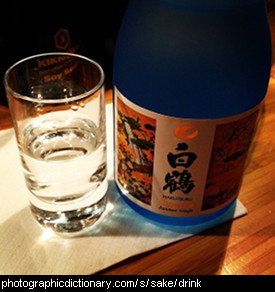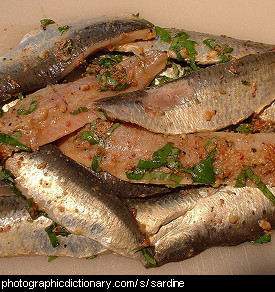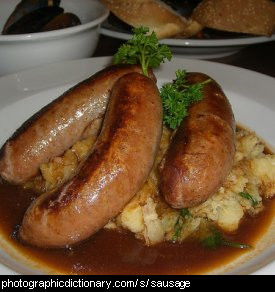Scientific name: crocus sativus
Scientific name: salvia officinalis
Salt is a mineral that is essential to all animal life, but is toxic to most land plants. Salt is found in the sea, in your blood and sweat and in solid form as rock salt away from the sea.
Salt is collected to use for making food either by mining a deposit of rock salt, or by evaporating salty water until only the salt is left behind.
The photo is of the surface of a salt lake with piles of salt scraped into mounds, ready to take away.
Scientific name: sardina pilchardus
Sardines and pilchards are a group of small, oily fish. In some places, a small pilchard is called a sardine and a large sardine is called a pilchard. They can be eaten grilled, pickled or smoked. Sardines are most commonly bought in cans. They are eaten bones and all and are an excellent source of minerals.
A sauce is a liquid that is used to add flavor to food. Sauces can be served by pouring them on top of food, or by having them on the side, like the dipping sauce in the picture. Two of the most popular sauces are soy sauce and tomato sauce, or ketchup. Gravy is a sauce made to accompany meat, and chutney is a thick sauce made from spice and vegetables.
Sauces can be any thickness, from really watery to very thick and chunky.
A sausage is a long, thin meat product. They are made from a mixture of minced meat, cereals (often just breadcrumbs) and spices, in a thin casing to keep them in shape. The filling in a hotdog is a type of sausage. Sausages are usually eaten fried, grilled or BBQ'ed, with mashed potato, but there are lots of other ways to eat them.
Sausages come in lots of different flavours and sizes. How many different types of sausage have you tried?












